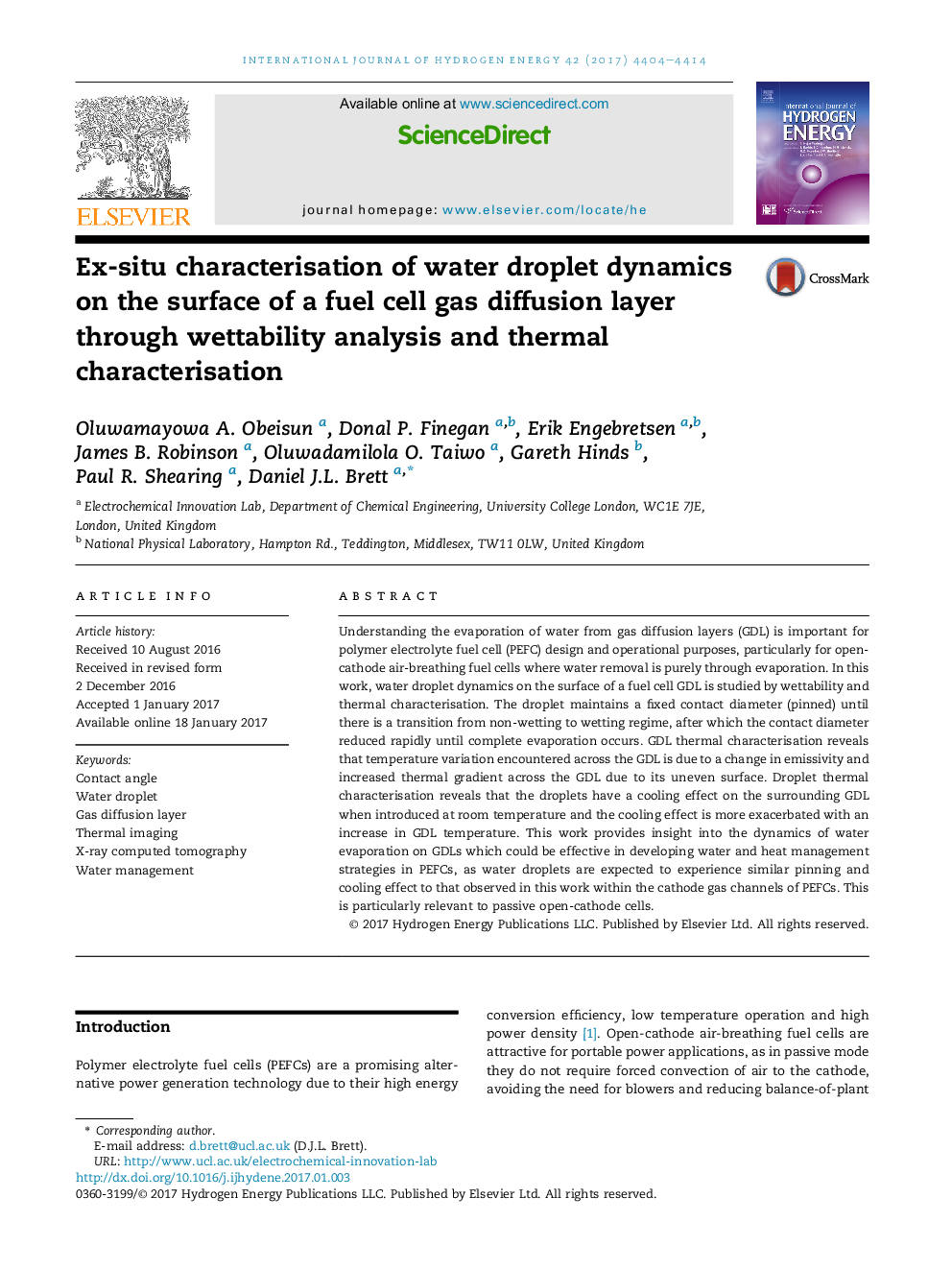| Article ID | Journal | Published Year | Pages | File Type |
|---|---|---|---|---|
| 5146357 | International Journal of Hydrogen Energy | 2017 | 11 Pages |
â¢Wettability correlated with thermal profile for droplet on GDL.â¢Transition regime from non-wetting to wetting identified.â¢Droplet evaporation cools GDL and leads to a halo effect.
Understanding the evaporation of water from gas diffusion layers (GDL) is important for polymer electrolyte fuel cell (PEFC) design and operational purposes, particularly for open-cathode air-breathing fuel cells where water removal is purely through evaporation. In this work, water droplet dynamics on the surface of a fuel cell GDL is studied by wettability and thermal characterisation. The droplet maintains a fixed contact diameter (pinned) until there is a transition from non-wetting to wetting regime, after which the contact diameter reduced rapidly until complete evaporation occurs. GDL thermal characterisation reveals that temperature variation encountered across the GDL is due to a change in emissivity and increased thermal gradient across the GDL due to its uneven surface. Droplet thermal characterisation reveals that the droplets have a cooling effect on the surrounding GDL when introduced at room temperature and the cooling effect is more exacerbated with an increase in GDL temperature. This work provides insight into the dynamics of water evaporation on GDLs which could be effective in developing water and heat management strategies in PEFCs, as water droplets are expected to experience similar pinning and cooling effect to that observed in this work within the cathode gas channels of PEFCs. This is particularly relevant to passive open-cathode cells.
Graphical abstractDownload high-res image (334KB)Download full-size image
